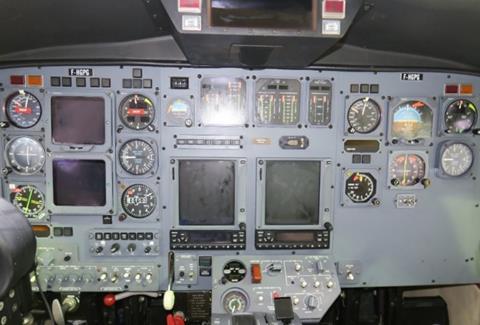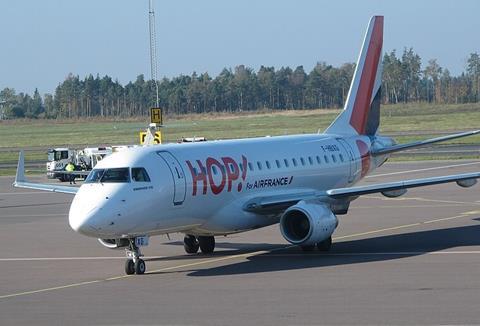French investigators have revealed that a Cessna Citation 525 crew’s uncertainty over the jet’s altitude, owing to an air data problem, preceded a serious airprox incident involving a Hop Embraer 170 early last year.
The inquiry found that a fault in the captain’s air-data system had occurred three times over the course of about four years – including a month before the airprox – but it had not been properly addressed.
After the Valljet aircraft departed Paris Le Bourget on 12 January 2022 it climbed towards 27,000ft.
But the captain, who was flying, and the first officer found that their altimeter readings disagreed – the first officer believed the aircraft had overshot its assigned altitude while the captain thought the aircraft was still beneath it. The standby altimeter was closer to the first officer’s display.
The crew levelled the jet and asked the air traffic controller to provide an altitude reading, to which the controller responded with 26,300ft.
This was consistent with the figure on the captain’s altimeter while the first officer’s altimeter was showing 28,000ft.
French investigation authority BEA says this led to “confirmation bias” because the captain took the controller’s response as evidence that his altimeter was correct, when the controller was actually just reading back the inaccurate altitude data received from the aircraft.

The crew therefore continued the climb to 27,000ft, as indicated on the captain’s system, but the discrepancy meant jet was actually flying some 1,500ft higher.
About 4min after supposedly reaching 27,000ft the captain informed the controller of an apparent problem with the altimeters, and said the aircraft might be higher than its transponder was transmitting. BEA says the crew “did not envisage” switching to the other transponder, which would have used the first officer’s indications.
The controller advised the crew of traffic – the Hop E170 – directly ahead at 2nm distance, which was theoretically 1,000ft above. The E170 was actually some 660ft below.
No collision-avoidance warning was issued because the systems were analysing the potential conflict based on erroneous data from the Cessna.
BEA estimates the aircraft converged, a few seconds later, to a minimum horizontal and vertical separation of 1.5nm and 665ft.
The aircraft, bound for Geneva, continued its flight after the controller asked the pilots to de-activate the Mode-C transponder and co-ordinated with military and Swiss control services to support its progress.
No-one on board either aircraft was injured.

BEA says a fault on the captain’s air-data system had shown up in November 2017, after which maintenance work found pollution the left-hand airspeed indicator system.
Another occurrence in February 2019 led to maintenance action which focused on a barometric fault. No air safety report was written. The system was the subject of a third incident in December 2021 but no air safety report was written and no fault was recorded in the technical log – only “informal verbal exchanges” took place, says BEA.
BEA carried out a detailed examination of the aircraft (F-HGPG) and discovered that, just above the captain’s pedals, the left pitot hose formed an “elbow” which created a low point in the system – in which liquid water could potentially accumulate – whereas the hose should have followed a continuous slope from the air-data instruments to the pitot tube.
The inquiry says the examination “did not identify with certitude” the cause of the air-data system fault.
But it points out that the symptoms of the three incidents suggest the fault was probably an obstruction – likely to be water or ice – located in the hose on the captain’s side.
BEA says the hose was reinstalled after the incident, eliminating the low point, and the aircraft was returned to service in March 2022. Up to mid-April this year, it states, no fault with the air-data system has recurred.


























